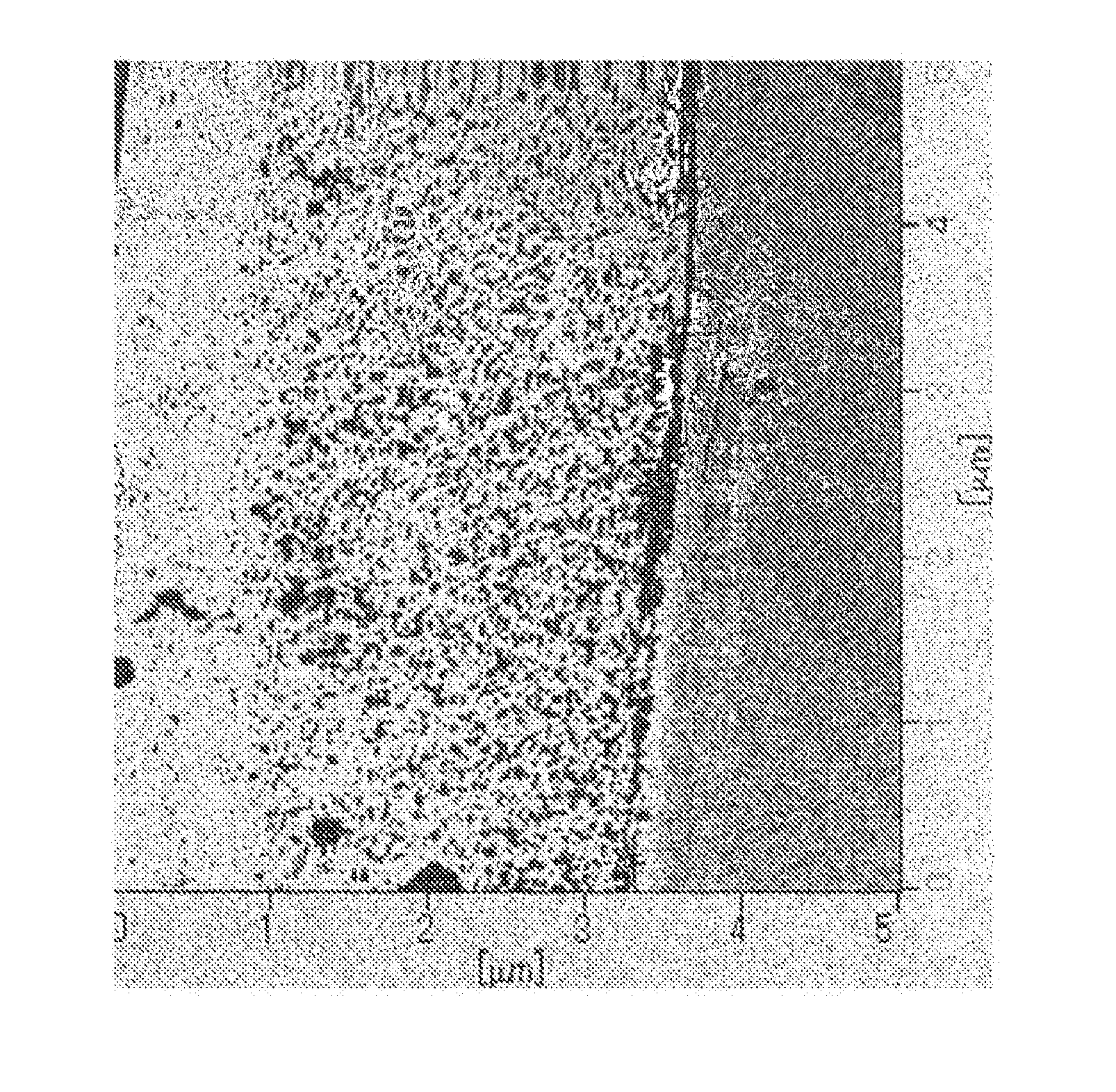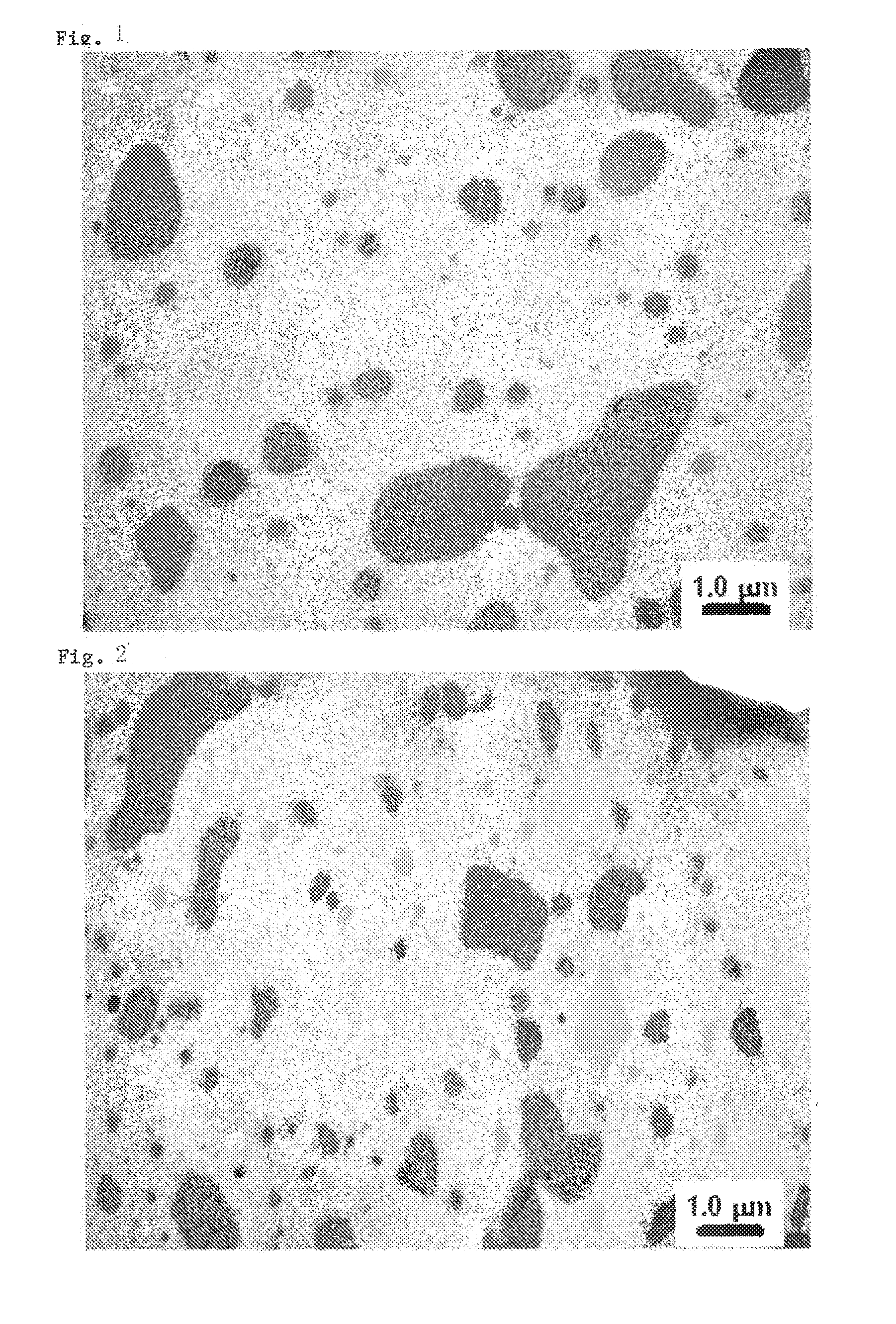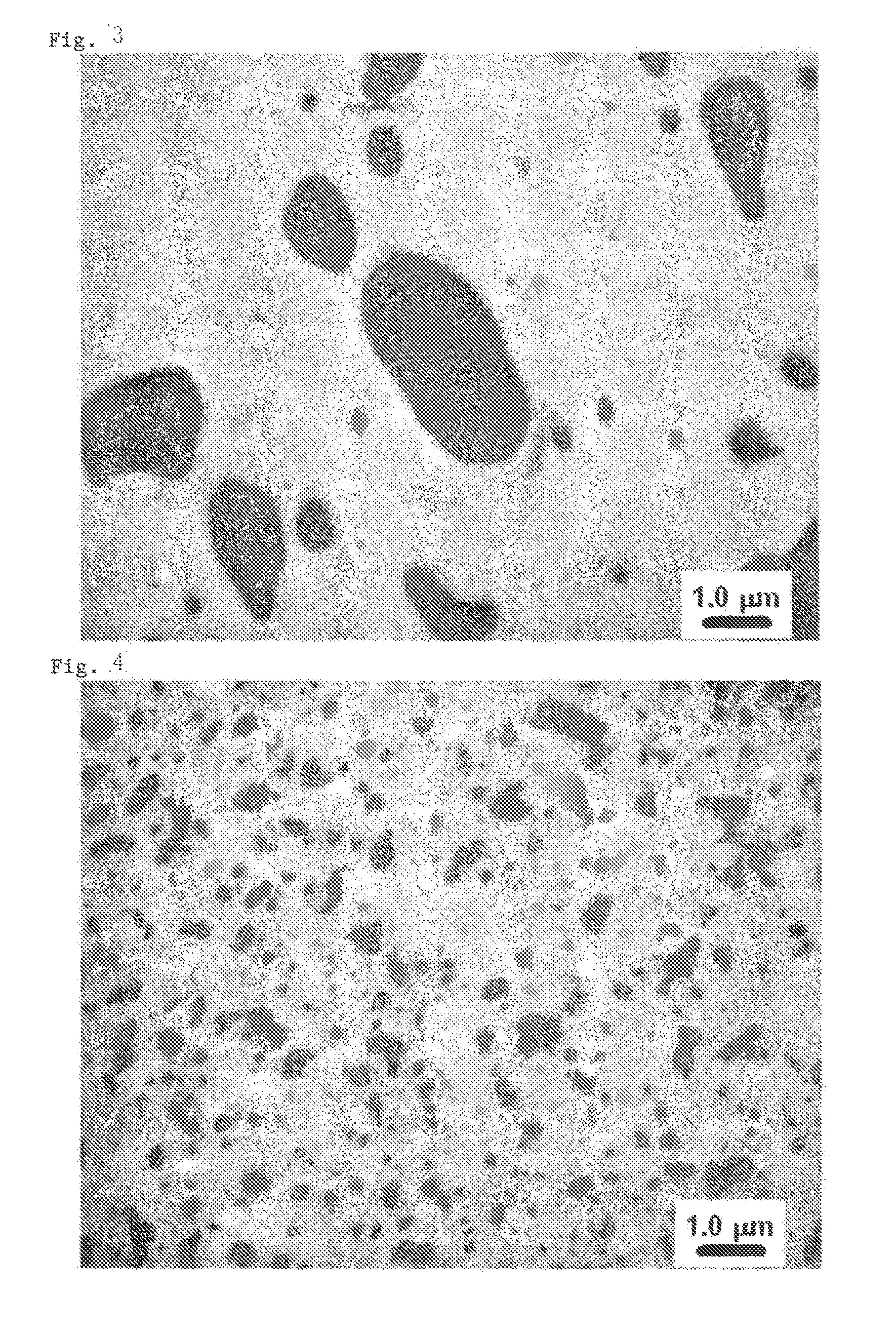Thermoplastic polymer composition and shaped article composed of the same
a technology of thermoplastic polymer and composition, which is applied in the direction of vehicle sealing arrangement, synthetic resin layered products, water-setting substance layered products, etc., can solve the problems of poor adhesion to ceramics, metals, glass, etc., and achieve excellent mechanical properties and formability, good flexibility, and excellent adhesion to ceramics.
- Summary
- Abstract
- Description
- Claims
- Application Information
AI Technical Summary
Benefits of technology
Problems solved by technology
Method used
Image
Examples
example 1
[0135]Using 100 parts by mass of the thermoplastic elastomer (A1-1), 30 parts by mass of the polyvinyl acetal (B-3), and 100 parts by mass of the softener for rubber, a thermoplastic polymer composition sheet was prepared according to the method of preparing a test specimen described in the above (1) and a laminate was prepared according to the method of preparing a test specimen described in the above (2). Using these test specimens, according to the methods described in the above (3) through (7), hardness, tensile breaking strength, tensile breaking elongation, and adhesion strength were measured, and morphology at the adhesion interface of the glass and the thermoplastic polymer composition sheet was observed, and an average particle diameter of the polyvinyl acetal (B) and a thickness of the continuous layer of the polyvinyl acetal (B) was measured. Results of them are put together and shown in Table 2. An electron micrograph of the observed morphology of the thermoplastic polym...
examples 2 through 12
[0136]Thermoplastic polymer sheets and laminates were prepared in a method same as that of Example 1 other than modifying the type and the blended amount of the thermoplastic elastomer (A), the type and the blended amount of the polyvinyl acetal (B), and the blended amount of the softener for rubber in Example 1 into the description in Table 2 for evaluation. In Examples 2 through 5, 7, and 8, the average particle diameter of the polyvinyl acetal (B) was measured. In Examples 4, 5, and 8, the thickness of the continuous layer of the polyvinyl acetal (B) was measured. Results of them are put together and shown in Table 2. In addition, electron micrographs of the observed morphology of the thermoplastic polymer composition sheets are shown in FIGS. 2 through 4, and scanning probe micrographs of the observed morphology on the glass adhesion interfaces are shown in FIGS. 6 through 8, respectively.
example 13
[0145]Using 100 parts by mass of the thermoplastic elastomer (A1-1), 30 parts by mass of the polyvinyl acetal (B-3), and 100 parts by mass of the softener for rubber, a thermoplastic polymer composition sheet was prepared according to the method of preparing a test specimen described in the above (1), and a laminate with a polar polymer was prepared according to the method of preparing a test specimen described in the above (2-2). Using these test specimens, hardness, tensile breaking strength, tensile breaking elongation, and adhesion strength were measured according to the methods of the above (3), (4), and (6). Results of them are put together and shown in Table 3.
PUM
| Property | Measurement | Unit |
|---|---|---|
| particle diameter | aaaaa | aaaaa |
| mol % | aaaaa | aaaaa |
| weight % | aaaaa | aaaaa |
Abstract
Description
Claims
Application Information
 Login to View More
Login to View More - R&D
- Intellectual Property
- Life Sciences
- Materials
- Tech Scout
- Unparalleled Data Quality
- Higher Quality Content
- 60% Fewer Hallucinations
Browse by: Latest US Patents, China's latest patents, Technical Efficacy Thesaurus, Application Domain, Technology Topic, Popular Technical Reports.
© 2025 PatSnap. All rights reserved.Legal|Privacy policy|Modern Slavery Act Transparency Statement|Sitemap|About US| Contact US: help@patsnap.com



